Story at a glance:
- Stone is an attractive, versatile, and durable material that can complement any style.
- The look of stone is used across exterior and interior design projects in large part for its biophilic benefits.
- Architectural stone veneer gives designers much greater control over factors like color and texture.
Stone is perhaps the oldest and one of the most prolific building materials on Earth. It’s been utilized in almost every way imaginable throughout the history of architecture and design—from the Great Pyramid of Giza to the earliest skyscrapers that sprouted across New York City and Chicago at the close of the 19th century.
Stone has quickly risen in popularity as an attractive, versatile, and durable material that can complement just about any style and be utilized in both exterior and interior design. And while natural stone can be expensive and difficult for contractors to work with, architectural stone veneer offers all of the aesthetic benefits without the expense and hassle.
“We’re seeing rapidly increasing interest in embracing organic textures, colors, and accents among designers and homeowners looking to incorporate biophilic design elements into their spaces,” says Sarah Lograsso, director of marketing and product design for Westlake Royal Stone Solutions, a leading provider of architectural stone.
Architectural stone veneer can provide a sophisticated sense of cosmopolitanism when complementing new siding on the exterior of a suburban home. On the interior, many designers are installing it in small touches throughout the space.
Others are going bolder, using it to create entire stone accent walls in the living room, dining room, or even bedroom. “It’s a really nice juxtaposition, and it becomes a statement piece that draws the focus of the entire room,” Lograsso says.
Lograsso sat down with gb&d to discuss the trends in the architectural stone veneer market, the direction the industry is headed, and the overall benefits of biophilic design.
What are the benefits of using architectural stone veneer?
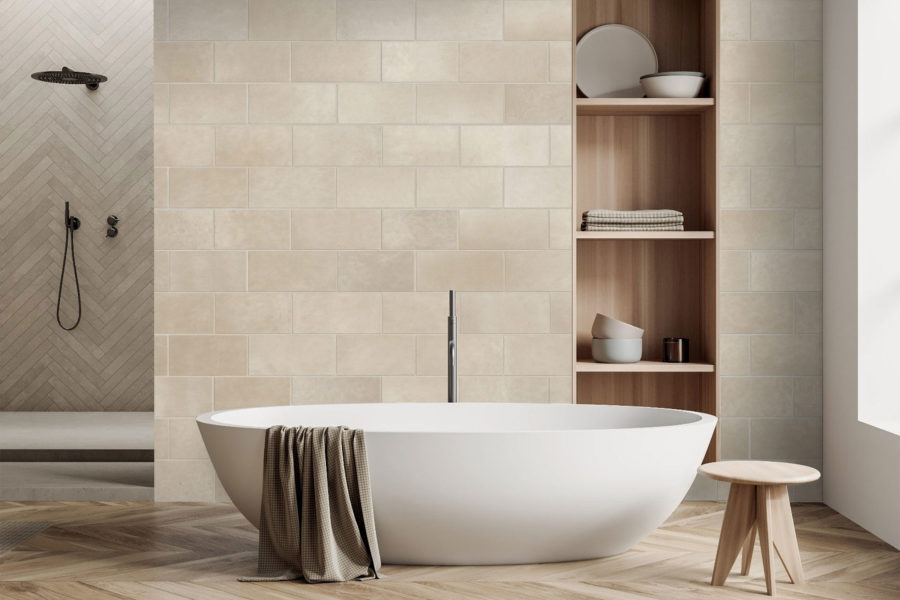
Cast-Fit in Parchment. Photo courtesy of Cultured Stone
Holistically, architectural stone veneer provides a number of advantages over other stone options, such as full bed-depth natural stone. For one, we aren’t quarrying any stone from the Earth. Instead, our products are composed of Portland cement, lightweight natural aggregates, and iron oxide pigment for coloration. This allows us to have much greater control over factors like color consistency and texture options.
For contractors, installation is much quicker and easier, and therefore more affordable. As a lightweight veneer product, our stone requires no footings or tie-ins, and we offer a wide range of panelized and large-format products that can further accelerate the installation process over full bed-depth natural stone.
From a design perspective, one of the greatest benefits is that architectural stone veneer provides us with a necessary connection to the natural world. In the modern era so much of our everyday experiences have become shaped by technology and, therefore, disconnected from the world around us. Design features that showcase natural elements, such as stone, provide a primal multi-sensory approach to reinforcing this connection with nature.
How does stone fit into current exterior cladding trends?

Weather Ledge in Winter Point. Photo courtesy of Dutch Quality Stone
As a manufactured product, architectural stone veneer opens up a world of almost unlimited product variety, and adding stone elements remains one of the top architectural trends for both exterior and interior applications.
For home exteriors, we’ve seen a significant shift away from homogenous surfaces, with specifiers and homeowners instead looking for cladding options to help them present an artistic blend of materials that go further in showcasing their unique personality and style—for example, mixing a stone knee wall with cement siding.
Several regions, particularly the West, have also seen a remarkable surge of interest in brick profiles. This includes higher demand for non-traditional colorways, such as monochromatic light and dark hues, as well as delicately nuanced neutrals. There has also been growing interest in non-traditional dimensions for brick applications, with longer lengths and shorter heights.
And let’s not forget about the outdoor living category, which has been an area of focused interest and investment for years. Outdoor entertainment spaces are becoming more and more popular, and our Kindred Outdoors + Surrounds line features outdoor cabinets, fire bowls, and pre-configured outdoor kitchens to meet the increased demand in this sector. The Covid pandemic actually amplified this, and now for a lot of people, when they are designing their home, the outdoor space is essential.
What about architectural stone veneer for interior use?
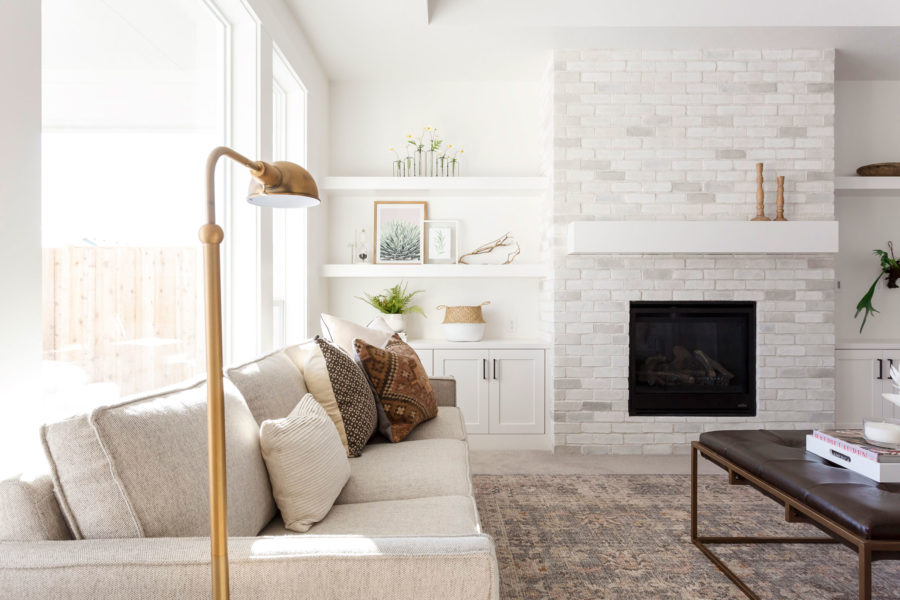
TundraBrick in Chalk Dust. Photo courtesy of Eldorado Stone
Today’s builders are incorporating a lot more stone finishes into their interior designs, whether it’s applying our Cultured Stone® Country Ledgestone as a backsplash in the kitchen or a fireplace clad in TundraBrick® by Eldorado Stone in the living room.
I think a lot of this is being driven by the fact that people are exploring the use of tactile materials on the interior of their homes and wanting to include more organic and authentic textures. Stone is becoming a material of choice because it’s so complementary to all other materials, like wood or metals.
And, with the increased interest around biophilic design, people are wanting to incorporate more nature into their spaces, and stone is one of the greatest materials that is versatile for indoor and outdoor use. It’s also evolved significantly from a design standpoint; it’s no longer your traditional large blocks and heavy colors. It has really evolved to where the styles are slenderer and more modern.
How is architectural stone biophilic?
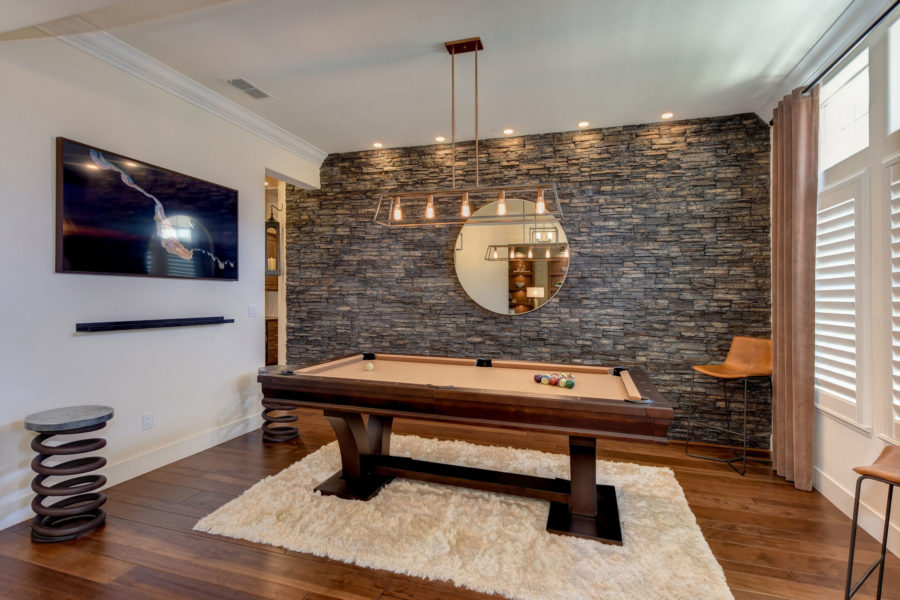
Stacked Stone in Black River. Photo courtesy of Eldorado Stone
This philosophy has been around for a long time, but it’s gaining new momentum. The biophilia hypothesis suggests that humans possess an innate tendency to seek connections with nature. What I love about this design consideration is that the incorporation of natural elements can offer certain health and wellness benefits. There are numerous studies that show biophilic design can reduce stress, enhance creativity, and improve well-being and the body’s natural healing process.
Think about how you feel after a walk through a nature preserve. The idea of bringing those materials inside has really inspired the architecture and design community to examine projects through a biophilic lens. So not only is incorporating natural materials into your home going to look great, but it can help create these more calming spaces and environments that can lead to better and healthier lifestyles.
What are architects and designers looking for today?
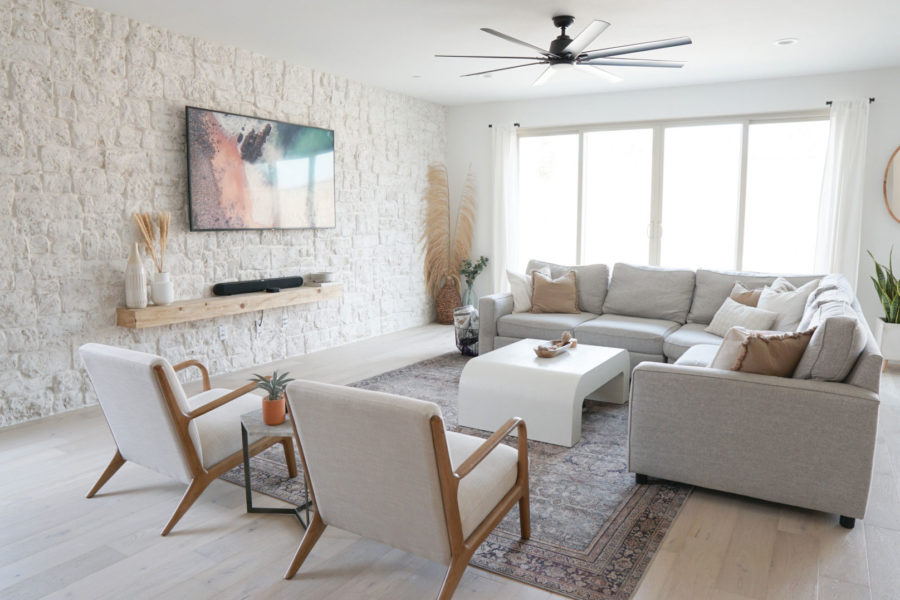
RoughCut in Casa Blanca. Photo courtesy of Eldorado Stone
We always try to stay connected to the pulse of the architecture and design community, and the biggest key is an ongoing collaborative process. We continuously draw inspiration from the colors, textures, and shapes of the natural world, and there is no better medium for incorporating a natural aesthetic into a home, commercial or other space than stone.
Authenticity is huge for designers, so we apply imaginative touches like embedded, fossilized artifacts or color gradients to customize our offerings. And whether you’re designing an exterior or interior, a stone accent can complement just about anything.
They’re also looking for versatility and innovations in format and composition so they can showcase their creativity. That’s why we focus so much on research and development, and experiment with new styles, colors, and textures—including large-format and panelized products that help to reduce installation time and labor. All of this allows for a great variety of design aesthetics.
What does the future look like?
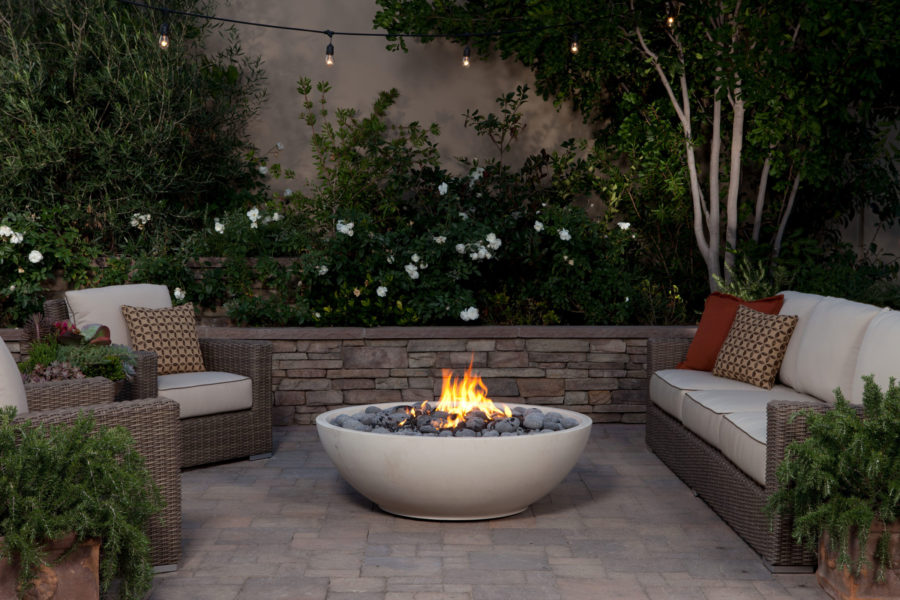
Mezzaluna Fire Bowl in Oyster Shell with Honed finish. Photo courtesy of Kindred Outdoors + Surrounds
From my perspective, if you think back a few years there was a heavy contemporary influence in home design, where we got a flurry of whites and grays, and everything was really clean with crisp lines and relatively cooler colors. This was often beautifully done, but what I’m seeing now more and more is the need for warmer colors and more robust textures. I think people are starting to get a little more unique, where they’re infusing their personalities and a little more life into their home design. And stone is perfect for facilitating this.


